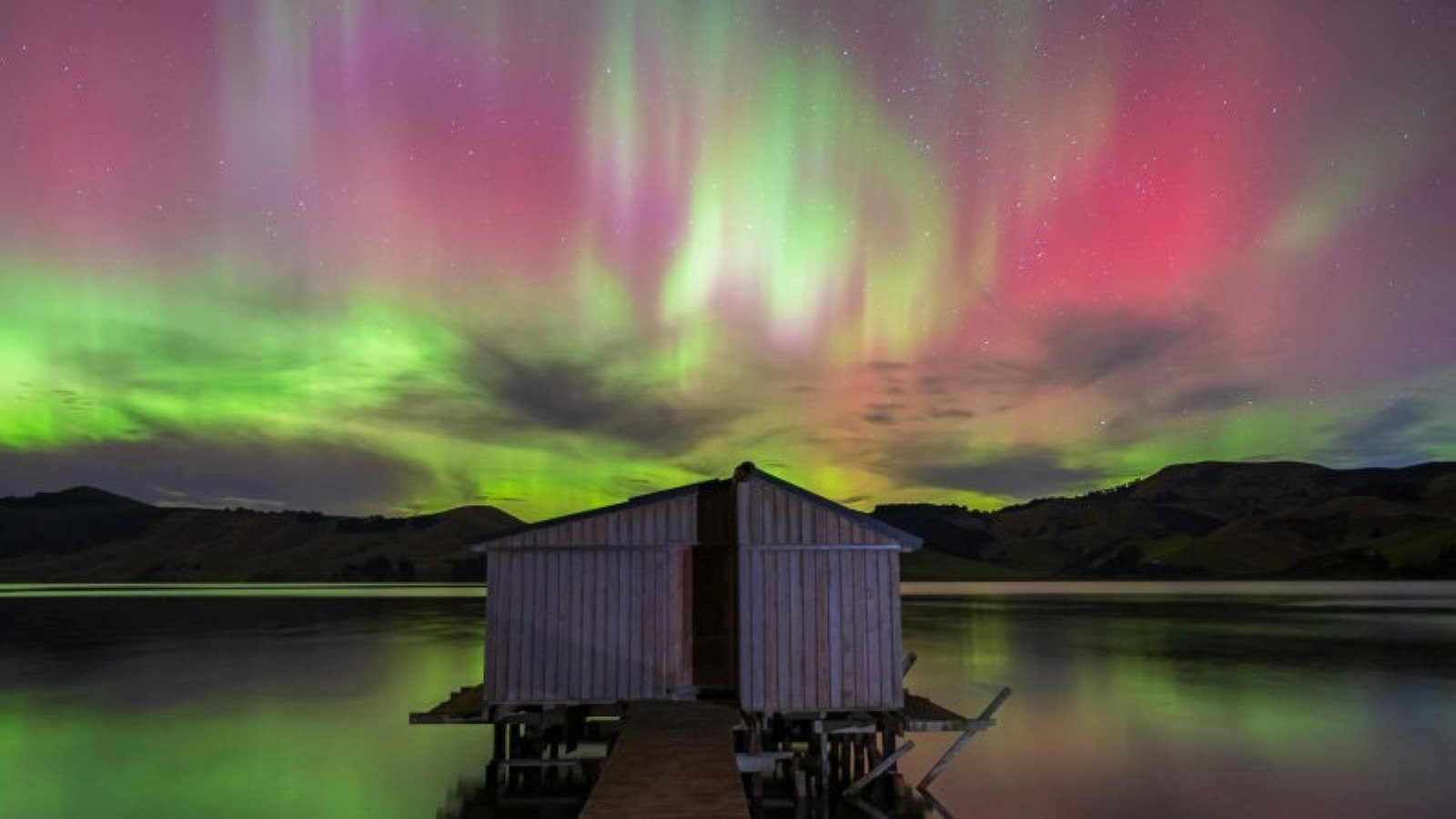
Dunedin Astronomical Society life member Ash Pennell said he had been watching the night skies above the city for about 60 years, and the answer was "yes, and no".
The 74-year-old believed the aurora appearing at the moment were "right up there" in terms of brilliance, but in terms of frequency, they had not increased over the past 150 years.
He said the sun was at the solar maximum of its 11-year activity sequence at the moment.
"Last year, if you remember, we had a couple of magnificent nights, something terrifically brilliant.
"What’s happened on this occasion is there’s been a massive area of sunspots, solar activity — basically, storms on the sun — and that sequence has continued."
He said the sun rotated every 28 days and the sunspots had been around for about three rotations.
"And they look like they’re going to continue for a while I think, which is rare.
"They normally fade out — they go around the back of the sun and they sort of disappear.
"So there’s been an intense storm up there, and the sun has ejected a lot of plasma out in our direction, hence what we’ve been looking at the last couple of nights."
He said the coronal mass ejections sent charged particles toward Earth, which interacted with the atmosphere near the North and South poles, causing them to glow and create the beautiful light displays we were seeing.
While the recent displays had been spectacular, they were not the most spectacular he had seen.
"The last one in 2014 wasn’t so good, but the one in 2003, we had some very fine auroras back then, and the 11 years before then, too.
"So it’s not new, this amount of activity."
In October 1927, the Otago Daily Times reported an "entrancing" aurora off the coast of Dunedin, which had a major effect on technology of the time.
"The effect of the phenomenon on local wireless sets on Saturday and Sunday evenings was very noticeable," the article said.
"Various owners of sets reported that it was utterly impossible to get in contact with Australian stations, and even the strong station at Wellington could not be heard."
Mr Pennell said there was a solar cycle back in the mid-1860s where the coronal mass ejections disintegrated telegraph wires in parts of the northern and southern hemispheres.
"That’s how strong it was. Back then, that would have been really spectacular.
"If we got an event that strong now, a lot of our satellites would be toast."
He believed the surge in aurora images had been created by a growing number of people using smartphones to take photos of the light shows, which were being posted on social media.
Dunedin astronomer Dr Ian Griffin agreed.
"People have got better camera phones and better cameras, so more people are going out and basically being able to photograph the aurora.
"Ash is absolutely right — you could see auroras with the naked eye back in the day.
"But I do think with websites like the Aurora Australis Facebook group, which has got nearly 120,000 members, social media is really playing a role, too."
Mr Pennell said the meteorological weather had also played a major part.
"We’ve had quite a run of clear nights, so people do see these things.
"They’re normally hidden by cloud."












